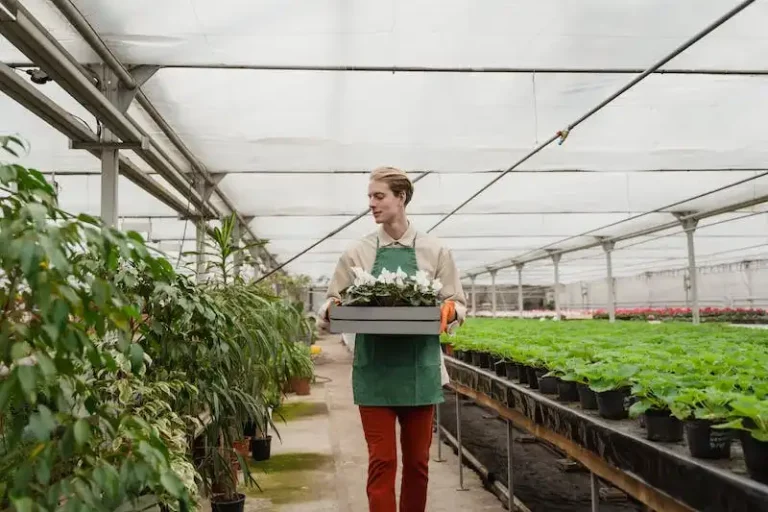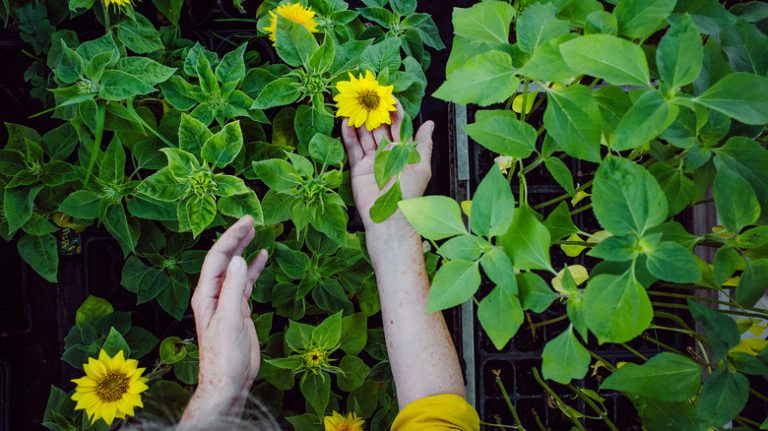Blackfoot Daisy (Melampodium leucanthum) is a beautiful flowering plant that is native to the plains of Central Texas. It is well-known for its daisy-like flowers with bright yellow heads and white petals. This plant can be grown in a variety of soils, but it thrives best in well-drained, sandy or loamy soils.
One of the best things about Blackfoot Daisy is its low maintenance requirements. It is a hardy plant that is resistant to pests and disease. It does not require a lot of watering, making it perfect for those who are managing their water usage. Additionally, it is frost-tolerant and can withstand cold winters, so you won’t have to worry about protecting it during the colder months.
Blackfoot Daisy can be grown from seed or propagated through the division of its roots. If you choose to grow it from seed, you can start indoors and transplant the whole seedlings outdoors once they have become established. It is recommended to cross-reference information on growing and caring for Blackfoot Daisy to ensure that you are giving it the best possible care.
In terms of uses, Blackfoot Daisy is a great addition to any garden. It adds a pop of color to flower beds, borders, or containers, and its low-growing habit makes it a great choice for groundcovers. It can also be naturalized and used to beautify open spaces. If you’re looking for a plant that requires minimal maintenance but delivers maximum awesomeness, Blackfoot Daisy is the perfect choice.
If you’re interested in growing Blackfoot Daisy, you can find seeds or seedlings from local gardening centers or online sources. Once planted, you’ll enjoy its beautiful blooms for years to come. So go ahead and give Blackfoot Daisy a try in your garden – you won’t be disappointed!
Blackfoot Daisy
Blackfoot Daisy (Melampodium leucanthum) is a type of daisy-like flower native to the central plains of North America. It is a low-maintenance plant that is often naturalized in gardens due to its hardiness and beautiful blooms.
When planted in well-drained soils, Blackfoot Daisy can tolerate both drought and winter frost. It is grown in most regions and can be propagated from seeds or cuttings. It has a deep root system, making it easy to transplant and establish new plants.
The foliage of Blackfoot Daisy is dark green and contrasts nicely with the white flowers. The plants can grow up to two feet tall and will bloom from spring to fall. They are a great addition to any garden, as they attract butterflies and other pollinators.
Blackfoot Daisy is best planted in full sun, but it can tolerate some shade. It does not require much water once established, though it should be watered more liberally during its first few years.
For maintenance, it is important to prune and manage the plants to prevent them from becoming leggy. This can be done by pruning back the foliage and deadheading the spent flowers. Blackfoot Daisy is generally resistant to pests and diseases, making it an easy addition to any garden or landscape.
If you are looking to add some beauty and awesomeness to your garden, consider planting Blackfoot Daisy. It requires little maintenance and will thrive in various conditions. Whether used as a border plant or a focal point, these daisies will surely add charm to your garden.
| Quick Tips for Growing Blackfoot Daisy: |
| – Plant in well-drained soils |
| – Water sparingly once established |
| – Prune and manage for optimal growth |
| – Can be propagated from seeds or cuttings |
For more information and gardening tips on Blackfoot Daisy, refer to local gardening guides and government sources. You’ll find plenty of photos and detailed information on how to grow and maintain this beautiful plant.
Buy Locally
When it comes to purchasing Blackfoot Daisy plants, it’s always best to buy locally. This is because these daisy-like plants are native to the central plains of North America and are naturally adapted to a variety of soils and growing conditions.
Blackfoot Daisy, also known as Melampodium leucanthum, is absolutely stunning with its beautiful white flowers and dark green foliage. It is a low-maintenance plant that can thrive in full sun or partial shade and requires little water once established. In fact, overwatering can be detrimental to its growth.
By buying locally, you can ensure that you are getting plants that have been grown and naturalized in your area. These locally grown plants will have well-developed root systems and will be able to handle the local climate, including the winter frost.
Propagation of Blackfoot Daisy can be done through seed or cuttings. If you’re interested in growing your own plants, you can start by collecting seeds or purchasing seedlings from a local nursery or garden center. There are also online sources where you can buy seeds or seedlings if you can’t find them locally.
When planting Blackfoot Daisy, make sure to choose a spot with well-drained soil and full sun. The roots of this plant don’t like to be waterlogged, so it’s important to provide good drainage. Once planted, Blackfoot Daisy requires minimal maintenance, including regular pruning to promote bushier growth.
One of the best things about Blackfoot Daisy is that it is relatively pest-free. It is not attractive to most common garden pests, making it a great addition to any garden. It also has a long bloom season, producing flowers for several months.
To summarize, if you’re looking for Blackfoot Daisy plants, it’s best to buy locally to ensure that you are getting plants that are well-suited to your area. These beautiful daisies are easy to care for and provide a pop of color to any garden or landscape. So, take the time to learn more about this plant and find a local source to add some Blackfoot Daisy awesomeness to your outdoor space!
Cross Reference
When it comes to the Blackfoot Daisy, there are plenty of resources available for you to cross-reference for more information on where to buy plants or seeds, transplanting tips, and managing its maintenance. Here is a list of reliable sources you can reference:
- Local nurseries or garden centers: They often carry Blackfoot Daisy plants or seeds and can provide guidance on the best soils, watering tips, and bloom times.
- Government or botanical websites: Many government or botanical organizations offer detailed information on the Blackfoot Daisy, including its naturalized growth in certain regions, best planting practices, and more.
- Cross-referencing with related plants: The Blackfoot Daisy is part of the Melampodium family, so you can also refer to information on growing Melampodium seedlings, pruning tips, and the uses of these daisies in landscaping.
- Online gardening forums or communities: These platforms often include discussions and experiences from fellow gardeners who have grown Blackfoot Daisies. You can find useful tips, photos of the flowers, and learn more about their awesomeness.
- Horticulture guides or books: There are numerous horticulture guides available that cover topics like cross-referencing disease and pest management, propagation methods, and winter care for Blackfoot Daisies.
By cross-referencing these sources, you’ll have a whole plant care guide at your fingertips. You’ll learn the best time to plant, how to care for the roots, when and how to prune, the best soil conditions, and more. You can also find information on indoor growing or starting seedlings from cuttings. With proper cross-referencing, you can become well-versed in managing the Blackfoot Daisy and enjoy its vibrant color and low-maintenance awesomeness for years to come.
Blackfoot Daisy Photos
If you want to see the beautiful blooms of Blackfoot Daisies, take a look at these photos below. You’ll be amazed by their vibrant colors and delicate petals.
Blackfoot Daisies are native to the central plains of North America and can be found growing naturally in a variety of soils. They are hardy plants that can tolerate drought and frost, making them an excellent choice for gardeners in those regions.
This plant is relatively low-maintenance, which makes it ideal for busy gardeners. Once established, Blackfoot Daisies require minimal watering and can thrive in full sun. They can even tolerate a bit of shade, though they will bloom more prolifically in full sunlight.
You can grow Blackfoot Daisies from seed or seedlings, and they can also be easily propagated from cuttings. When planting, make sure to give them enough space to spread, as they can grow up to two feet tall and three feet wide.
If you have pests in your garden, Blackfoot Daisies are a great choice as they are resistant to most common garden pests and diseases. They also have deep roots that help them survive during dry spells. However, be careful when pruning, as the sap from the plant can cause skin irritation.
To ensure the best growth and bloom, water Blackfoot Daisies liberally during the first few weeks after transplanting. After that, they will only need occasional watering, especially during hot and dry periods.
If you’re interested in planting Blackfoot Daisies in your garden, here are some tips: plant them in well-drained soil, choose a sunny location, and provide them with occasional water. With minimal care, you’ll be able to enjoy their awesomeness for years to come.
For more information on managing pests, disease, and other maintenance tips for Blackfoot Daisies, refer to our comprehensive propagation guide and reference list of color sources.
So, take a look at these photos below and get inspired to add Blackfoot Daisies to your garden!
- Photo 1: Blackfoot Daisy in full bloom.
- Photo 2: Close-up of Blackfoot Daisy’s daisy-like flowers.
- Photo 3: Blackfoot Daisy plant with lush foliage.
- Photo 4: Blackfoot Daisy naturalized in a garden bed.




